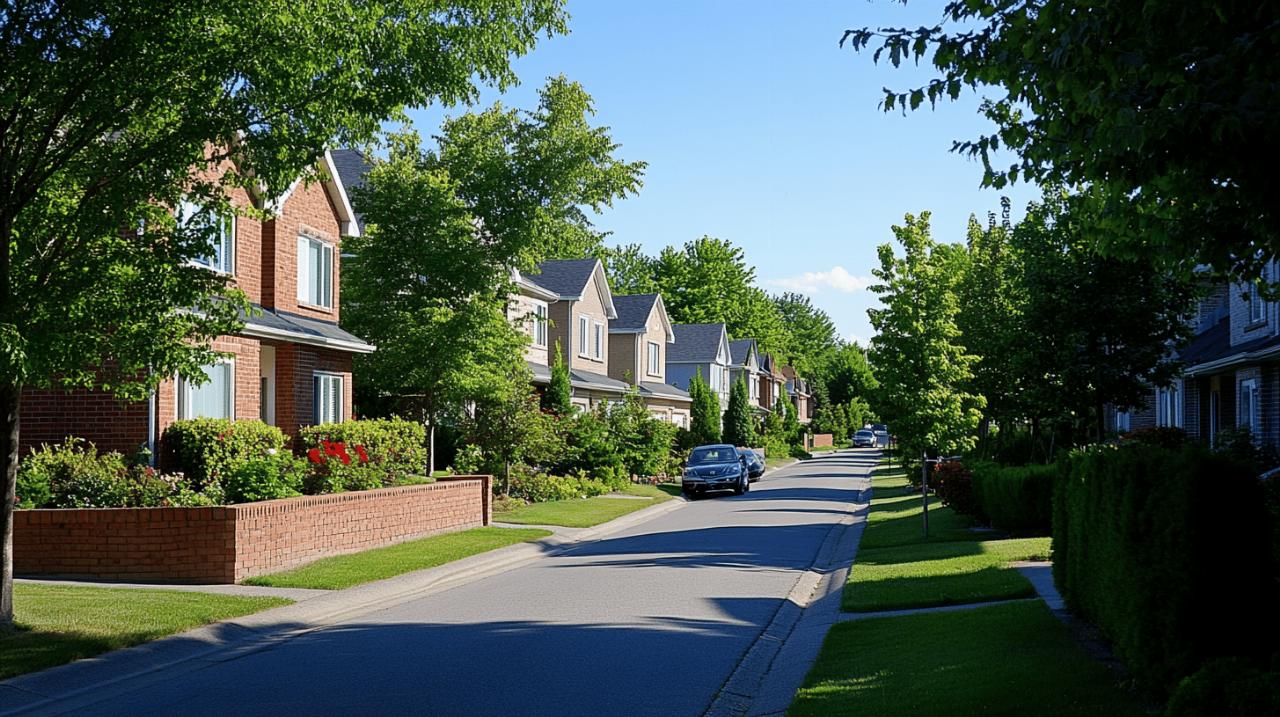Property ownership in the United Kingdom brings with it a range of considerations, particularly when it comes to the boundaries that separate one home from another. Few topics generate as much discussion amongst homeowners as the question of fencing and walls between neighbouring properties. Understanding the regulations that govern these structures is essential for maintaining harmonious relations and ensuring compliance with the law. The rules surrounding boundary structures are designed to balance the rights of individual property owners with the broader interests of community aesthetics and planning control. Whether you are contemplating the erection of a new fence or addressing concerns about an existing wall, familiarity with the legal framework can save considerable time, expense, and potential discord.
Determining your property boundaries and legal responsibilities
Before embarking on any construction work involving a boundary wall or fence, it is vital to establish precisely where your property ends and your neighbour's begins. This information is typically found within your property deeds, which serve as the official record of ownership and often include plans that delineate the extent of your land. Consulting these documents should be your first step, as they may contain specific markings or annotations that clarify responsibility for maintaining boundary structures. In some instances, a T mark will appear on the boundary line within the deeds, indicating which property owner holds responsibility for that particular section of fencing or wall. If such a mark sits on your side, it generally suggests that the boundary feature is your responsibility to maintain and repair.
Locating property lines through deeds and council records
Property deeds remain the most authoritative source for understanding boundary lines, yet they are not always entirely clear. In cases where ambiguity persists, the Land Registry can provide additional assistance. This government body maintains comprehensive records of land ownership across England and Wales, and homeowners can apply for official copies of their title register and title plan. These documents offer further clarity on the precise location of boundaries and may reveal details not immediately apparent from the deeds alone. Local council planning departments also hold records that can prove useful, particularly when historical boundary disputes have been resolved or when planning permissions have been granted in the past. Combining information from these various sources helps to build a complete picture of your property's extent and the legal obligations attached to it.
Understanding joint ownership and adjacent property rights
In certain situations, boundary structures may be jointly owned by adjacent property holders. This shared ownership can arise from historical agreements or simply from the practical reality that a wall or fence serves both properties equally. When joint ownership exists, both parties typically share responsibility for maintenance and repair, although the specifics should be confirmed through the property deeds or any written agreements between previous owners. Understanding these arrangements is crucial before undertaking any alterations or improvements, as unilateral action on a jointly owned structure can lead to disputes. Even where a boundary feature is not jointly owned, the rights of adjacent property owners must still be respected. This includes considerations such as the impact of a new wall on light, views, and access, all of which can affect neighbourly relations and may have legal implications.
Height restrictions and planning permission requirements
The height of boundary structures is subject to specific regulations intended to ensure that development remains appropriate to the surrounding area. Under the Town and Country Planning Order, homeowners in England benefit from permitted development rights, which allow certain types of building work to proceed without the need for formal planning permission. For fences, walls, and gates, these rights typically permit structures of up to two metres in height when located away from the frontage of the property. This means that in rear or side gardens, a fence or wall can reach this height without requiring approval from the local planning authority, provided that no other restrictions apply. However, these permitted development rights are not unlimited, and several conditions must be met before work can commence.
Standard height limitations for boundary structures
When a boundary structure is positioned elsewhere on the property, away from any road or public footpath, the standard maximum height allowed under permitted development rights is two metres. This limit applies to new fences, walls, and gates, as well as to any increase in the height of existing structures. It is important to note that if you wish to add a trellis or similar extension to an existing fence, the total height including the addition must not exceed two metres unless you secure planning permission. Front garden boundaries are subject to more restrictive rules due to their visibility from the street and their potential impact on the character of the neighbourhood. In these locations, structures must not exceed one metre in height if they are to benefit from permitted development rights. Properties situated within conservation areas or those that are listed buildings face additional constraints, as local authorities often impose stricter controls to preserve the historic and architectural character of these areas.
Special Considerations for Roads and Public Footpaths
Boundary structures adjacent to a public road or footpath are treated differently due to safety and visibility concerns. The Highways Act places particular emphasis on ensuring that fences and walls near highways do not obstruct sightlines for drivers or pedestrians. As a result, any boundary feature located next to a road or public footpath is subject to a maximum height of one metre under permitted development rights. This lower threshold reflects the need to maintain clear views at junctions and along pavements, reducing the risk of accidents. Additionally, dangerous or harmful materials such as barbed wire are generally prohibited in these locations, as they pose a risk to members of the public. Before constructing or altering a boundary structure near a highway, it is advisable to consult both your property deeds and the local council to confirm whether any additional restrictions apply. Some councils may have implemented an article four direction, which removes permitted development rights in specific areas and requires planning permission for works that would otherwise be exempt.
Communicating with neighbours about boundary works
 Open and respectful communication with your neighbours is one of the most effective ways to prevent disputes and ensure that any proposed work proceeds smoothly. The Party Wall Act requires that you notify your neighbour if you intend to carry out work that affects a shared boundary, providing them with at least two months' notice of your plans. This formal notification process is designed to give all parties an opportunity to raise concerns or seek clarification before construction begins. Even in situations where formal notice is not legally required, discussing your intentions with your neighbour is a courteous and practical step. It allows you to explain the nature of the work, address any potential concerns about height, materials, or impact, and reach a mutual understanding that can prevent misunderstandings later on.
Open and respectful communication with your neighbours is one of the most effective ways to prevent disputes and ensure that any proposed work proceeds smoothly. The Party Wall Act requires that you notify your neighbour if you intend to carry out work that affects a shared boundary, providing them with at least two months' notice of your plans. This formal notification process is designed to give all parties an opportunity to raise concerns or seek clarification before construction begins. Even in situations where formal notice is not legally required, discussing your intentions with your neighbour is a courteous and practical step. It allows you to explain the nature of the work, address any potential concerns about height, materials, or impact, and reach a mutual understanding that can prevent misunderstandings later on.
Reaching mutual agreements before construction begins
A written agreement between neighbours can provide clarity and security for both parties, particularly when work involves a shared boundary or jointly owned structure. Such agreements can specify the nature of the work to be undertaken, the responsibilities of each party for maintenance and repair, and any financial contributions required. While these agreements are not always legally binding unless formalised through a solicitor, they serve as a valuable record of intentions and can help to resolve disputes if they arise. In cases where significant alterations are planned, it may be prudent to involve a solicitor in drafting the agreement to ensure that it is comprehensive and enforceable. This is especially important if the work involves substantial investment or if there is any ambiguity regarding ownership or responsibility. By taking the time to document the agreement, homeowners can protect their interests and foster a cooperative relationship with their neighbours.
Avoiding property disputes through proper consultation
The Boundary Disputes Protocol encourages property owners to resolve disagreements amicably and to consider mediation or alternative dispute resolution before resorting to court proceedings. Disputes over boundary structures can be costly and time-consuming, with legal fees averaging several thousand pounds. Early consultation and clear communication can often prevent such disputes from arising in the first place. If a disagreement does occur, mediation offers a less adversarial and more flexible approach than litigation, allowing both parties to work towards a mutually acceptable solution with the assistance of a neutral third party. The Land Registry can also play a role in resolving boundary disputes, particularly where there is uncertainty about the precise location of a boundary line. Homeowners can apply for a determined boundary, which involves a detailed examination of the evidence and results in an official determination that is binding on the parties involved. This process can provide the clarity needed to settle disputes and move forward with confidence.
Seeking professional guidance and local authority approval
While many boundary works can be undertaken without formal planning permission, there are circumstances in which seeking professional guidance and local authority approval is essential. The complexity of property law and planning regulations means that even seemingly straightforward projects can have unforeseen legal implications. Consulting with experts can help to ensure that your plans comply with all relevant rules and that you avoid costly mistakes or enforcement action. Local councils employ planning officers who are knowledgeable about the specific regulations that apply in their area, and they can provide advice on whether planning permission is required for your proposed work. In addition to council guidance, solicitors specialising in property law can offer valuable insights into boundary disputes, ownership issues, and the legal responsibilities that attach to boundary structures.
Contacting your local council's planning department
The planning department of your local council is the first point of contact for any queries regarding the need for planning permission. Officers can advise on whether your proposed fence or wall falls within permitted development rights or whether a formal application is necessary. They can also inform you of any local planning policies that may affect your plans, such as restrictions in conservation areas or additional controls imposed through an article four direction. Some councils provide online resources and guidance notes that explain the planning process and set out the criteria for determining whether permission is required. The Planning Portal, operated in partnership with the Ministry of Housing, Communities and Local Government, offers a comprehensive resource for homeowners seeking to understand their rights and obligations. By engaging with your local council early in the planning process, you can identify potential issues and address them before committing to construction.
When to consult legal professionals about boundary matters
Legal advice may be necessary when boundary disputes escalate or when there is significant uncertainty about ownership or responsibility. Solicitors experienced in property law can assist with interpreting property deeds, negotiating agreements with neighbours, and representing your interests in mediation or court proceedings. Although legal fees can be substantial, the cost of professional advice is often justified when compared to the potential expense and stress of unresolved disputes. In some cases, homeowners may wish to formalise a boundary agreement by registering it with the Land Registry. This involves completing an AP1 form and paying a fee, which provides official recognition of the agreed boundary and can prevent future disputes. Legal professionals can guide you through this process and ensure that all documentation is correctly completed and submitted. Ultimately, seeking expert guidance is a prudent investment that can protect your property interests and ensure compliance with the law, allowing you to proceed with your plans with confidence and peace of mind.





